He didn’t sneak. He didn’t slink. He chewed the heel of my stiletto right in front of me, under the chair where I sat drinking my coffee—bold as a burglar with the lights on. I saw it happening. I shouted. But it was too late. The damage had already been done—swift, targeted, unforgivable.
That heel had never hurt anyone. Except maybe my bank account.
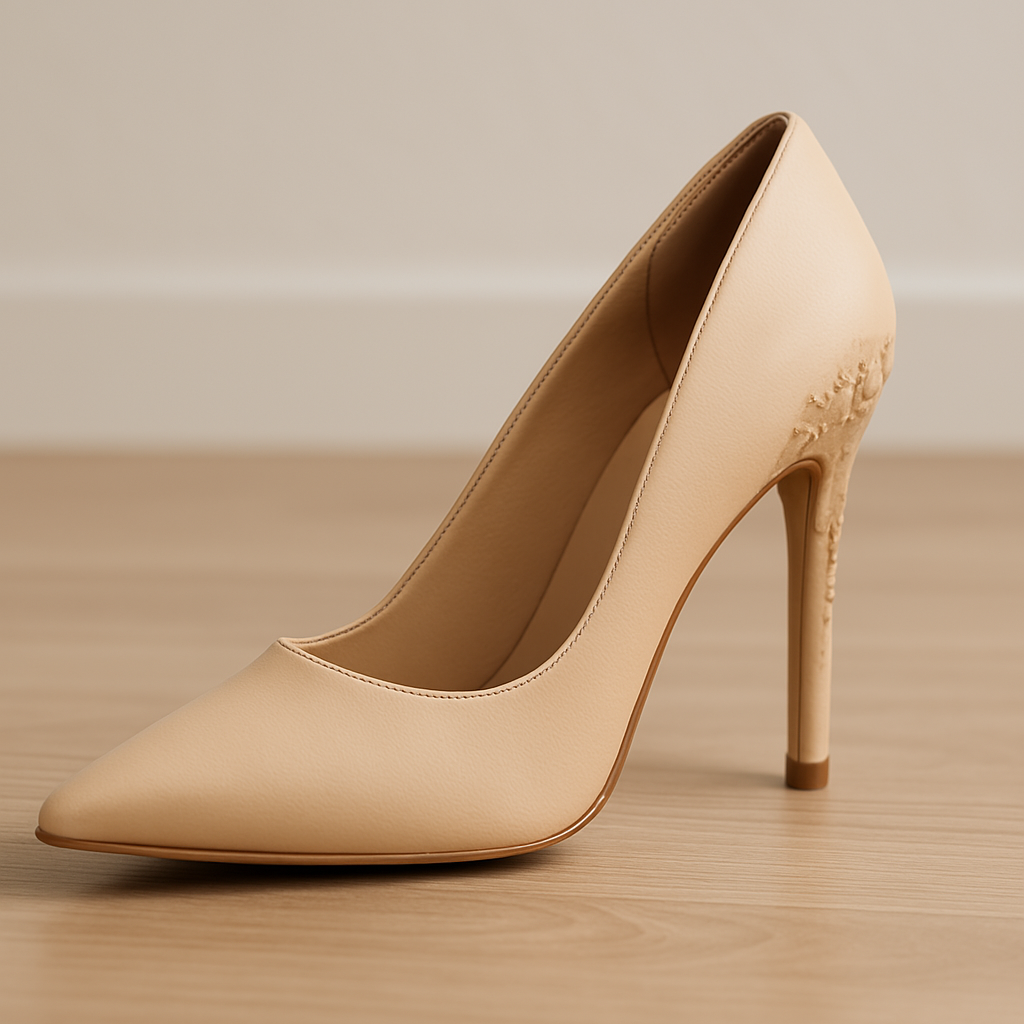
Dog behavior issues aren’t always loud. Sometimes, they’re quiet. Stealthy. Heel-snatching. Like the moment my nine-month-old dog sunk his teeth into the stiletto I loved—a sleek, black statement shoe that had only known pavement once. One second I was sipping coffee, the next I was watching him commit fashion homicide right beneath me.
I didn’t leave the shoes lying around for days. I wasn’t careless. I was right there. But dog behavior issues don’t care about timing, cost, or sentiment. They strike fast, chew hard, and leave you wondering if your once-sweet pup is secretly a designer-hating anarchist.
What followed was part meltdown, part investigation—and full-on realization that this wasn’t an isolated event. This was a pattern. A canine uprising. A furry little tornado of chewed shoes, scattered pee pads, and shredded sanity.
Table of Contents
If dog behavior issues have turned your floors into a battlefield, you’ll love this simple cleaning challenge that helps you reclaim your space—one chewed corner at a time.
The Repeat Offender: A Brief History of Domestic Terror
This dog has issues. Real, bite-sized, house-wrecking dog behavior issues.
It started small—cute even. A chewed slipper here, a nibbled-on corner of a blanket there. But it escalated. Fast. A month ago, he mauled my daughter’s brand-new shoes. Fresh from the box. Worn once. The kind of purchase that makes you feel like you’ve got your life together… until your dog decides otherwise.
Then came the urination. Not the innocent puppy kind. No, this was strategic indoor sabotage. Corners, rugs, bags—anything remotely vertical became a target. Once he discovered he could lift his leg outside, he brought the party indoors. It was like his bladder had a vendetta.
And just when I thought it couldn’t get worse—he bit the S Pen from my tablet. My actual Samsung Galaxy S Pen. The one tool I use to stay calm, organized, creative. Gone. Just another casualty in a growing list of chewed and defiled possessions.
This wasn’t a phase. It was a pattern. Dog behavior issues turned into domestic terrorism—minor acts of rebellion that added up to chaos. Every time I tried to reclaim control, he responded with teeth.
I can’t have nice things. Not stilettos. Not sanity. Not even a functioning stylus.
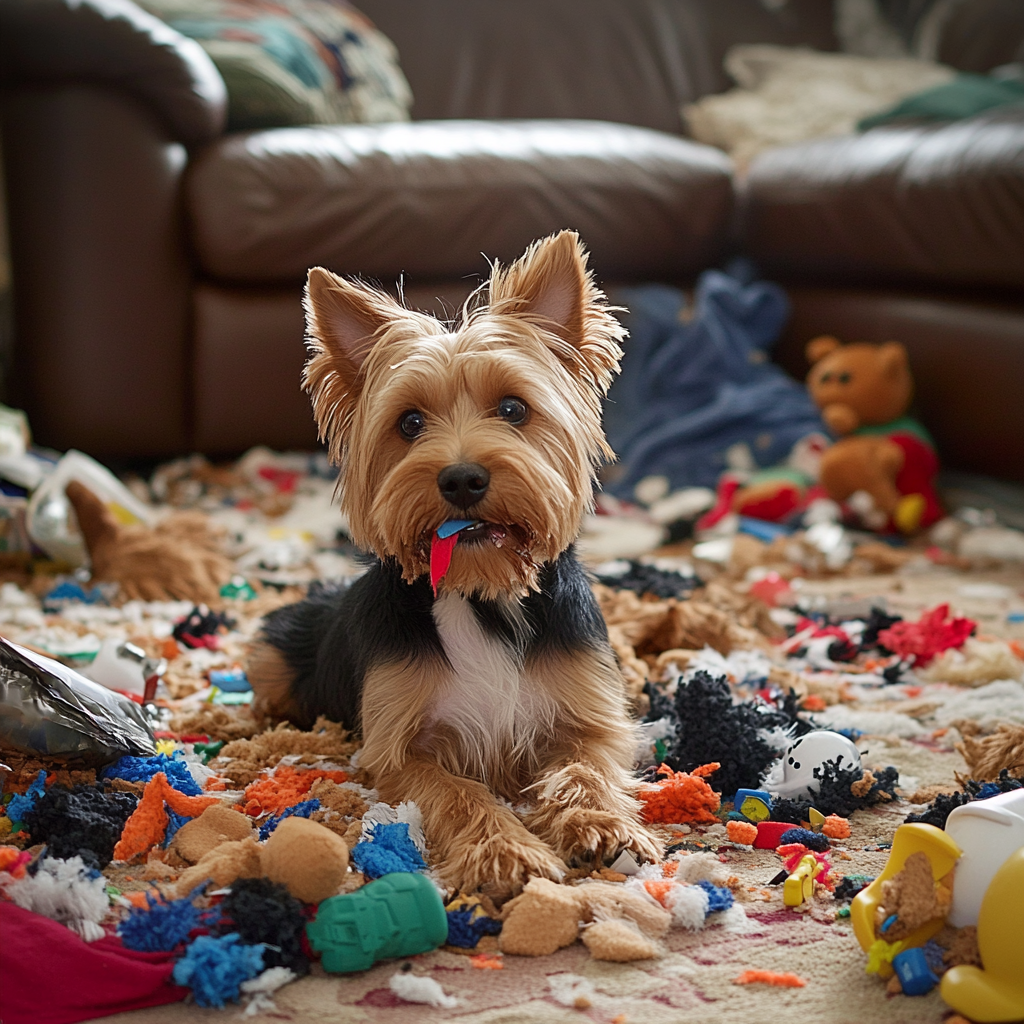
Dealing with dog behavior issues is hard enough—add bedroom clutter to the mix, and it’s chaos. Here’s how I tackled both in this bedroom decluttering guide.
Why It’s Not Just About the Shoes
It’s never just the shoes. When your dog develops full-blown dog behavior issues, the damage is rarely limited to one object—it’s emotional, existential, and oddly personal.
That stiletto? It wasn’t just an accessory. It was confidence in heel form. A symbol of the rare, brief moment I felt put together in a life full of snack crumbs, laundry piles, and half-finished coffee. So when he bit the heel clean off in under thirty seconds, right beneath my chair, it wasn’t just destruction—it felt like mockery.
And when I found the mangled S Pen, chewed like a plastic twig, I realized this wasn’t about chewing. It was about anarchy. My tools, my peace, my fragile illusion of order—all under attack.
Dog behavior issues don’t just mess with your floor plan. They mess with your mental health. Especially when you’re trying to reduce your meds, hold it together for your kid, and maybe—just maybe—enjoy five calm minutes with a cup of coffee.
There’s a psychological toll in cleaning the same mess twice. There’s frustration in knowing the chaos is cute, furry, and looking you dead in the eye while he does it. And there’s heartbreak in realizing the only thing you’ve trained successfully is your ability to find the pee puddles before stepping in them.
This isn’t about shoes. It’s about control. About dignity. About fighting back—one bitter spray bottle and belly band at a time.
Sometimes, dog behavior issues push you straight into a meltdown—and sometimes, into a mop. This cleaning therapy confession captures what scrubbing through the chaos really looks like.
What Causes These Dog Behavior Issues?
You might think dog behavior issues are just about chewing and peeing, but no. That would be too simple. What we’re dealing with here is a four-legged mastermind operating on instinct, impulse, and occasional spite. There’s a psychology behind this chaos—a chewy, slobbery, shoe-obliterating psychology.
Let’s unravel the dog-brained logic, shall we?
- Puberty… but fuzzier.
At nine months old, your dog is basically a hormonal soup in fur. He’s not a baby, not yet an adult—just a confused, leg-lifting teenager with poor decision-making skills and a burning desire to make his presence known. And how does a young male dog announce himself? With pee. Everywhere. On everything. If it’s vertical, it’s fair game.
He’s not doing it to be mean. He’s doing it because his little canine brain says, “Ah yes. If I pee on this table leg, I will become alpha of the living room.”
- Your home is now his personal LinkedIn.
Dogs mark to say: “This is mine. That’s mine. You? You’re mine too.” It’s social networking, dog-style. Scent-based messaging. And the more prized the object (read: your stiletto), the higher the value of the statement. He didn’t chew your worn-out slippers. He chose the high heel. The symbol. The power piece. He knew.
It’s not random destruction. It’s branding.
- Destruction is a form of emotional release.
Dogs chew for comfort, stress relief, curiosity, and occasionally—as a bold creative expression. He’s not just biting stuff. He’s processing his feelings. He’s exploring textures. He’s sculpting your shoe into modern art. You’re welcome.
- Chaos is his love language.
Dogs with behavior issues don’t always want to hurt you. Sometimes, they just want to be close. Too close. “Oh, you loved this object? Let me become one with it… via teeth.” His way of bonding with you is to chew on your favorite possessions. He’s not evil. He’s just affectionately destructive.
- You’ve let your guard down—and he’s onto it.
They wait. They watch. The moment you think, “He’s finally calming down,” is the exact moment he plans the next strike. He learns your rhythms. He studies your trust levels. And just when you leave that shoe 3 cm off the “safe zone”… boom. Game over. He doesn’t want your stuff. He wants your attention.
It’s not malice. It’s instinct wrapped in fur, sharpened by testosterone and spurred on by opportunity. Understanding this strange, chaotic psychology? Step one.
Step two? Probably involves baby gates, chew sprays, and maybe a support group.
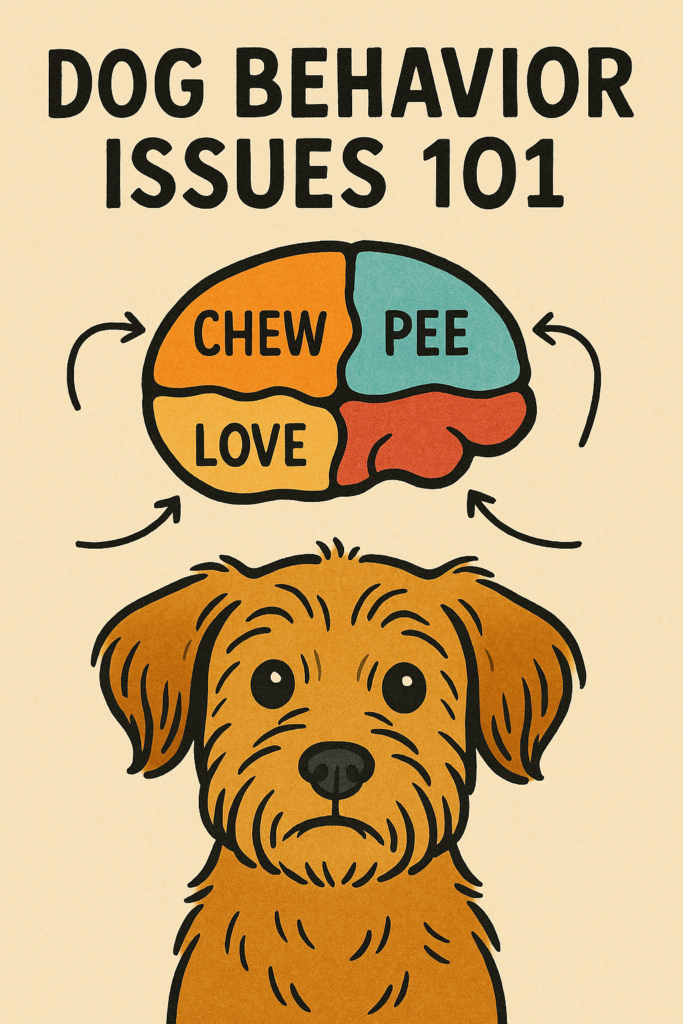
When dog behavior issues derail your sanity, a few clever spring cleaning hacks can help you feel back in control—at least of your floors.
Dog Probation: The Measures I Took… That Absolutely Didn’t Work
Dealing with dog behavior issues has turned my home into a low-budget sitcom with expensive props. After The Stiletto Incident, I initiated full dog probation. The plan was simple: boundaries, structure, and a chance at redemption.
Reality? Utter failure.
- Restricted Access? He Breaks the System.
Dog behavior issues don’t respect closed doors. I blocked hallways. I turned the bathroom into his gated luxury suite—pee pad, water, emotional space to reflect. Still, he emerged like a furry Houdini and chewed something irreplaceable. He doesn’t walk—he appears.
- Chew Toy Alternatives? Not Impressed.
I tried every solution for destructive dog behavior issues. Durable bones, plush squeakers, enrichment puzzles. He sniffed them, judged them, then casually chewed on the base of the chair I was sitting on. This isn’t boredom—it’s critique.
- Supervised Time? Defiance in Real Time.
He has no shame. I’ve watched him grab a shoe and start chewing while maintaining unbroken eye contact. It’s not subtle. It’s not a mistake. It’s performance art. Classic signature of unchecked dog behavior issues.
- Cleaning the Pee? He Changes the Map.
Enzymatic cleaners? Used them. Every surface scrubbed. He simply pees elsewhere. New locations. Bolder ones. Strategic ones. He is not potty training—he’s tagging territory like Banksy with a bladder.
- Praise for Outdoor Peeing? Minimal Interest.
I throw a party every time he pees outside. Enthusiastic claps. Treats. Validation. He receives it with the expression of a man tolerating applause at a retirement party. Then he pees behind a plant inside the next morning.
These dog behavior issues are not improving. Probation has become a farce. I’m enforcing rules; he’s auditioning for a role in “Prison Break: Canine Edition.”
This isn’t training. This is a slow surrender disguised as structure.
What I’ve Tried to Stop Dog Behavior Issues (Spoiler: My Shoes Didn’t Make It)
When you’re knee-deep in shredded heels and mystery puddles, you’ll try just about anything. I’ve bought the sprays, clicked the “miracle” toys into my cart, watched the training videos, and whispered gentle threats under my breath.
Some things worked. Some didn’t. Some made me question my entire ability to coexist with a domesticated animal. But if you’re staring at gnawed furniture or catching your dog mid-crime, here’s a rundown of what I’ve personally tested—and what might actually work for your four-legged delinquent.
Training Mat for Boundaries That Actually Mean Something
There’s something oddly powerful about setting a boundary and watching your dog… actually respect it. A training mat can be a game changer when dealing with persistent dog behavior issues, especially if your pup thinks furniture is a jungle gym and your shoes are fair game.
I tried a low-profile training mat designed to give a gentle static correction when stepped on—nothing painful, just enough to say, “Hey, maybe don’t.” I placed it near the shoe cabinet, and for the first time in weeks, he paused. He thought about his actions. I swear I saw him reevaluate his entire relationship with stilettos.
The one I used was this by PetSafe —and it genuinely shifted the power dynamic in my living room.
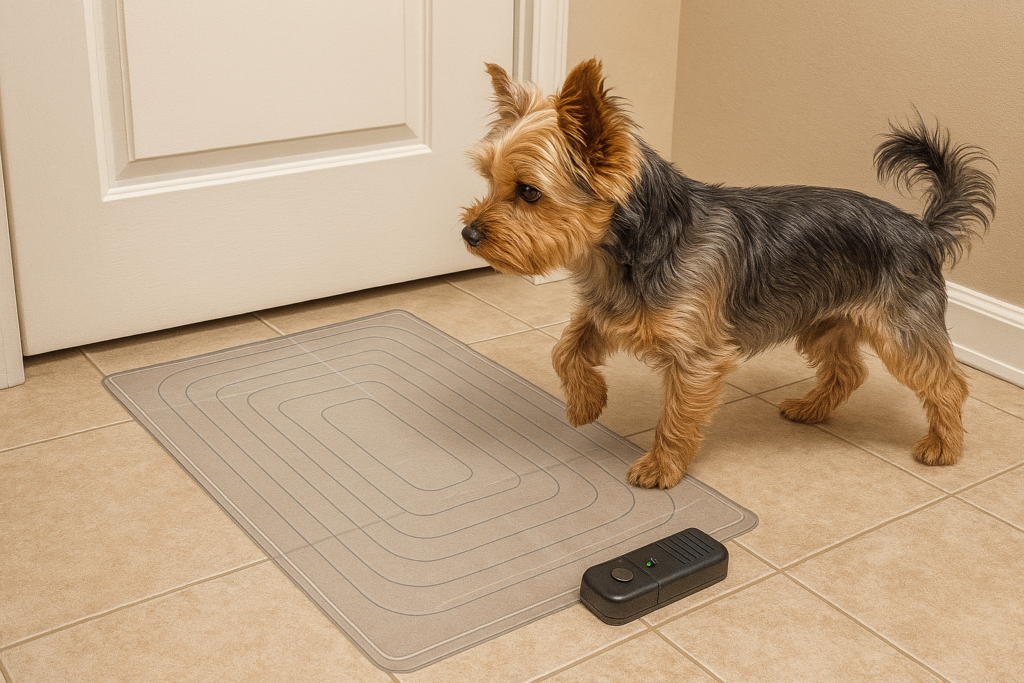
Invisible Fence: The Trick That Finally Kept Him Out of My Daughter’s Room
One of our biggest dog behavior issues? My daughter forgetting to close her door. Every. Single. Time. And without fail, he’d sneak in like a silent tornado—leave a sock chewed, a shoe “redecorated,” or worse, a little puddle of rebellion.
I needed a solution that didn’t involve padlocking her door or standing guard like a hallway bouncer. Enter: the invisible fence. No bulky gates. No drama. Just a clear, invisible line that says, “This space is off limits, buddy.”
We used this wireless invisible fence by PetSafe. It’s waterproof, easy to set up, and—most importantly—finally gave me back one room in the house where chaos doesn’t reign. At least, not the four-legged kind.
Bitter Sprays: For Dogs Who Chew First and Ask Never
One of the first things I tried to stop the chewing chaos was a bitter spray. The concept? Simple. Make things taste bad, and your dog will avoid them. Logical, right?
In reality? Not so much.
I sprayed it on chair legs, shoes, even the handle of my daughter’s toy stroller. He sniffed it, then licked it like vinaigrette. Bold. Unshaken. Unbothered.
To be fair, not all dogs have a gourmet death wish. Some genuinely hate the taste—and this one by Bodhi Dog comes highly recommended. It’s natural, safe, and smells like lemon… to you. To your dog, ideally, it smells like regret.
Tough Chew Toys: Because Your Dog Thinks He’s a Wood Chipper
Some dogs nibble. Mine? He commits. He chews like he’s training for a competitive sport—and the shoes, furniture, and S Pen never stood a chance.
That’s why I turned to “indestructible” chew toys, though I’ve learned that word should come with a disclaimer. That said, some toys do hold up better than others—and if you’ve got a teething pup or a full-grown chewing machine, a serious toy can save your home.
I tried this aggressive chewer toy —durable, bouncy, and doubles as a treat dispenser. It’s built like a tank and far more satisfying to destroy than my last remaining pair of flats.
A Book (Because Even With a Working Training Mat, I Still Needed Therapy in Paperback)
The training mat worked. Miraculously. It kept him out of my daughter’s room like a polite electric butler. But even then—I knew I needed more than gadgets and sprays. I needed to understand why my dog was acting like a tiny fuzzy rebel with zero regard for personal property.
That’s when I found The Perfect Puppy in 7 Days by Dr. Sophia Yin. It’s everything I didn’t learn on YouTube, wrapped in calm science, real structure, and enough empathy to make me feel like maybe, just maybe, I wasn’t completely failing.
It didn’t stop him from chewing socks… but it did help me stop yelling about it. That counts.
The Mental Stimulation He Clearly Needed
I used to think he just needed more walks. More toys. More chewing options. But no—what he needed was mental work. A job. Something to make him think before deciding to dismantle my handbag.
So now we mix in brain games, structured play, and a bit of training that actually engages his overactive little mind. Brain Training for Dogs has been part of that—simple exercises we can do at home when I’m not chasing him away from the laundry pile.
It’s not magic. But it’s something. And at this point, I’ll take anything that slows down the crime rate.
The Tools That Bought Me a Bit of Quiet (Bless Them All)
Some tools didn’t fix the problem—they just helped me breathe through it. The training mat set clear boundaries. The chew toys bought me a few silent minutes. And on especially wild days, when the barking and pacing hit an all-time high, I added in some hemp-based calming chews. Nothing dramatic, just enough to soften the edges and keep him from bouncing off the walls like a wind-up toy.
Used together, they didn’t transform my dog into a saint. But they gave us both a little breathing room—one chewed slipper at a time.
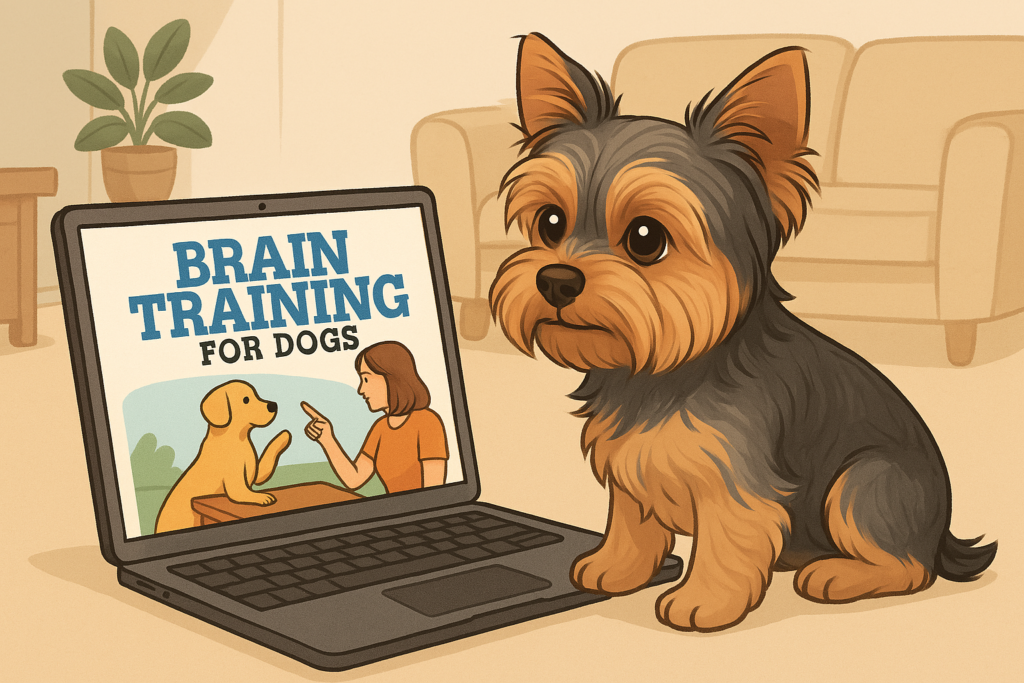
What I’ve Learned (and What You Should Definitely Not Ignore)
Living with dog behavior issues has taught me more about patience, resilience, and the limits of my shoe collection than any parenting book ever could. You can buy the sprays, the toys, the gates—but nothing really prepares you for the wild ride of managing a dog who thinks house rules are optional.
What I’ve learned? Dog behavior issues don’t get solved overnight. Some products help. Some routines stick. Others fall apart faster than a chewed flip-flop. But when you mix the right tools with a bit of humor and a ton of forgiveness, things slowly start to shift.
He still has dog behavior issues—chewing, marking, testing boundaries like it’s his full-time job. But now I have a system. A mat. A fence. A bag of tricks and treats and maybe a calming chew for emergencies. I’m not perfect. He’s not perfect. But the destruction rate is down and the laughter’s back.
If you’re living in the middle of your own mess, navigating your own version of dog behavior issues, just know this: the shoes are replaceable. The dog? He’s part of the story now. And every little win—every unchewed corner, every dry rug—is worth celebrating.
Got your own battle scars from dog behavior issues? Drop your story in the comments—let’s swap survival strategies (and maybe shoe recommendations).
Dog behavior issues aren’t just frustrating—they’re exhausting, messy, and oddly personal. But with the right strategies (and a bit of sarcasm), they become manageable, even laughable.

No responses yet